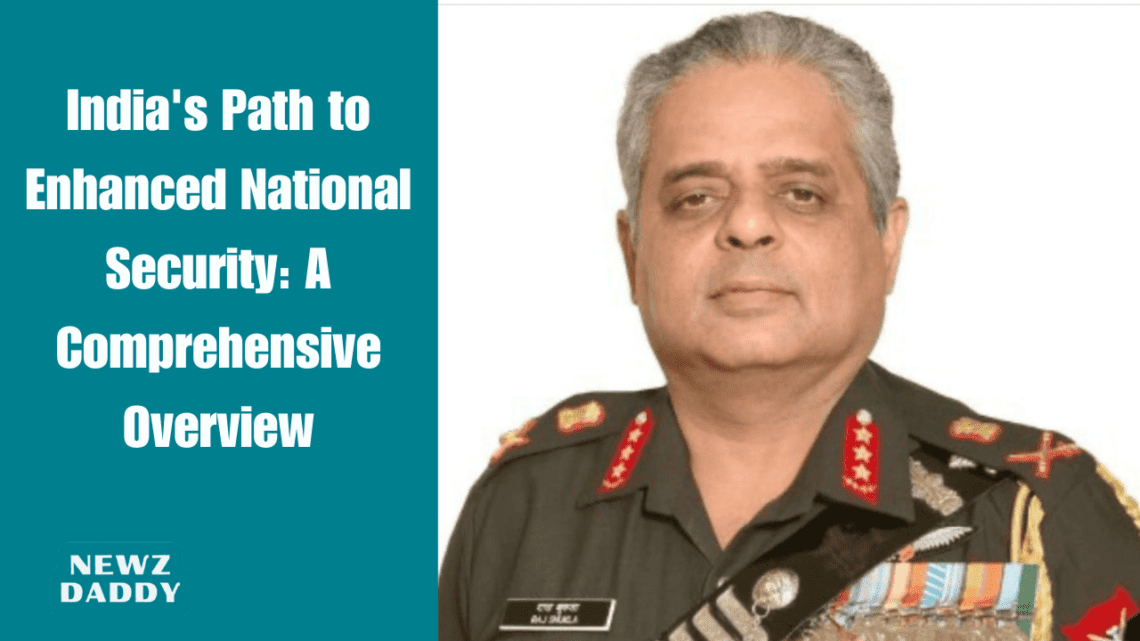India’s Path to Enhanced National Security: A Comprehensive Overview
Newzdaddy Politics Updates
Setting the Stage for India’s Security Transformation
Over the past decade, under the leadership of the Modi government, India has embarked on a significant journey to enhance its national security apparatus. This transformation represents a paradigm shift in defense and national security strategies, marking one of the most substantial reforms since the country’s independence. While progress has been made, challenges persist, particularly in light of the complex geopolitical landscape and rapid technological advancements shaping the nature of modern warfare.
Defining India’s Strategic Vision
In December 2015, Prime Minister Modi articulated a comprehensive strategic vision during his address to the Combined Commanders. This vision encompassed structural reforms, technological advancements, cultural shifts, and capacity enhancements aimed at bolstering India’s defense capabilities and power projection on the global stage. Despite initial skepticism, the government has demonstrated unwavering determination in systematically implementing these reforms.
Unprecedented Reforms in Defense
The establishment of the Chief of Defence Staff (CDS) and the Department of Military Affairs (DMA) marked a significant milestone in India’s defense architecture. This move rectified longstanding imbalances in civil-military relations, empowering the armed forces to play a more assertive role in strategic decision-making under robust political oversight. The creation of the CDS/DMA framework mirrors similar reforms undertaken by other nations, notably the United States under Barry Goldwater Nichols.
A Shift in Strategic Posture
Recent military operations such as the Balakote and Kailash Range strikes exemplify India’s evolving strategic posture. These swift and decisive actions send a clear message to adversaries, signaling a willingness to defend national interests and deter aggression. Furthermore, a recalibration of defense posture along the Northern borders, particularly the Line of Actual Control (LAC) with China, reflects a more nuanced understanding of emerging threats.
Promoting Self-Reliance and Innovation
The “Aaatmanirbharta” (self-reliance) initiative in defense transcends mere autonomy in procurement; it represents a cultural shift towards innovation and enterprise. Collaborations with domestic startups and technology firms underscore India’s ambition to become a global hub for defense innovation. Initiatives like iDEX have paved the way for startups like 114ai and 3rditech to emerge as potential industry leaders, mirroring the transformative role of private sector involvement in defense research and development.
Must Read:
Exploring the Dynamics of Air-to-Ground Operations in Exercise Vayu Shakti-2024
Advancing Technological Frontiers
The corporatization of the Ordnance Factory Board (OFB) and reforms within the Defence Research and Development Organization (DRDO) underscore India’s commitment to technological advancement. These initiatives aim to leverage emerging technologies such as artificial intelligence (AI) and space capabilities to bolster national defense. The integration of private sector expertise and startup energy into defense manufacturing and innovation processes heralds a new era of indigenous defense production.
Navigating the Path to Theater Commands
The evolution of a consensus on the establishment of Theater Commands reflects a maturing discourse within the defense establishment. While challenges remain in implementation, efforts to foster a joint military culture and streamline command structures signal a proactive approach to modernizing India’s defense architecture. The transition towards an AI-enabled military underscores the need for robust data infrastructure and technological integration across domains.
India’s Emerging Role in Global Security Dialogue
Platforms like the Raisina Dialogue and the Indo-Pacific Army Chiefs’ Conference underscore India’s growing influence in shaping global security discourse. These engagements facilitate meaningful exchanges on strategic challenges and opportunities, positioning New Delhi as a focal point for comprehensive security deliberations. Embracing a proactive role in multilateral forums enhances India’s stature as a responsible global actor committed to peace and stability.
Addressing the China Challenge
The strategic competition with China presents multifaceted challenges that demand swift and decisive responses. Beyond conventional military capabilities, India must contend with the growing sophistication of China’s digital warfare capabilities and strategic maneuvers. Urgent measures are required to bolster India’s strategic deterrence and adapt to evolving threats in the Indo-Pacific region.
Navigating Asymmetrical Warfare
Recent conflicts highlight the efficacy of asymmetrical tactics and precision weaponry in challenging conventional defenses. India must adapt to the changing nature of warfare, where low-cost innovations can undermine expensive defense systems. Embracing agile procurement processes and fostering a culture of innovation will be essential to maintaining a credible deterrence posture in the face of asymmetric threats.
Challenges and Opportunities
While significant strides have been made in India’s national security makeover, formidable challenges lie ahead. Sustaining momentum amidst rapid technological advancements and geopolitical shifts will require adaptive strategies and continuous innovation. As India navigates its role in an increasingly complex security environment, the principles of “Vasudhaiva Kutumbakam” (the world is one family) must be balanced with the imperative of “peace through strength.”
Must Read:
Indian Coast Guard Marks 48 Years of Service: A Chronicle of Achievements




